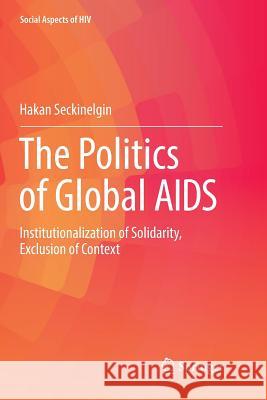The Politics of Global AIDS: Institutionalization of Solidarity, Exclusion of Context » książka
topmenu
The Politics of Global AIDS: Institutionalization of Solidarity, Exclusion of Context
ISBN-13: 9783319834191 / Angielski / Miękka / 2018 / 176 str.
The Politics of Global AIDS: Institutionalization of Solidarity, Exclusion of Context
ISBN-13: 9783319834191 / Angielski / Miękka / 2018 / 176 str.
cena 421,13 zł
(netto: 401,08 VAT: 5%)
Najniższa cena z 30 dni: 421,13 zł
(netto: 401,08 VAT: 5%)
Najniższa cena z 30 dni: 421,13 zł
Termin realizacji zamówienia:
ok. 20 dni roboczych.
ok. 20 dni roboczych.
Darmowa dostawa!
Kategorie BISAC:
Wydawca:
Springer
Seria wydawnicza:
Język:
Angielski
ISBN-13:
9783319834191
Rok wydania:
2018
Wydanie:
Softcover Repri
Ilość stron:
176
Waga:
0.28 kg
Wymiary:
23.39 x 15.6 x 1.07
Oprawa:
Miękka
Wolumenów:
01
Dodatkowe informacje:
Wydanie ilustrowane











